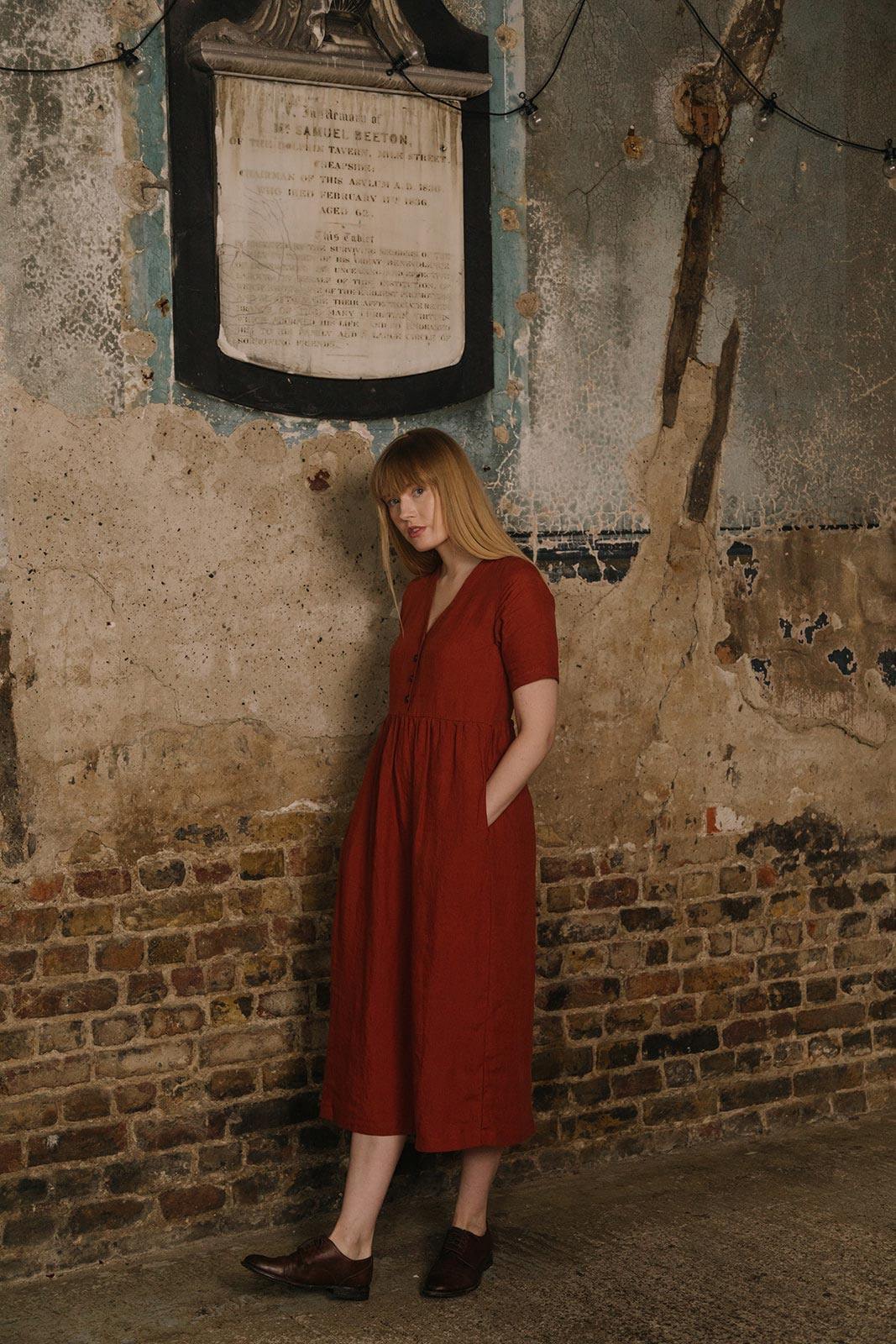One of the reasons Pyne & Smith was created was to bring practicality into women’s fashion. This is a desire that has transcended generations, has been a part of gender politics, and even caused struggle and resistance in the past. A significant aspect hidden at the root of this desire, and recognized by all women, is the frustration of the pocket.
Although pockets have been standardized in men’s fashion (conveniently sewn in, spacious and plentiful), women have seemed to lack this ease and security. Women often have to wonder if a garment even has pockets, check if they’re big enough to hold more than a few coins, and are skeptical of any garments with the pocket sewn shut: will they reveal a true pocket or is it purely a façade?
These are not exclusive frustrations to contemporary women; women have complained about their lack of pockets throughout history. In 1914, during the first wave of feminism, Charlotte Perkins Gilman’s short story ‘If I Were a Man’ depicts a woman who spends the day as her husband and describes her experience wearing his clothes:
Of course she had known they were there, had counted them, made fun of them, mended them, even envied them; but she never had dreamed of how it felt to have pockets
In 1849, Anna Maria Hall’s children’s novel Grandmama’s Pockets was a response to the threat of modern fashion on women’s pockets:
Let no demoiselle with a three-inch pocket stitched into her pretty little apron […] imagine they understand a tithe […] of the utility or comprehensiveness of GRANDMAMMA’S POCKETS!

The Toast Pinafore and her practical patch pockets
At one point or another, all women have felt the envy of men’s pockets or even been nostalgic of their grandmother’s practical fashion (granny’s oversized handbag comes to mind). This inspired me to dig deeper and look into the history of women’s pockets, and I stumbled upon the tie on pocket: a detachable hidden pocket that women used for over 200 years before being treated to a standard sewn in pocket. Contrarily, men have had sewn in pockets since the 17th century, whereas women’s pocket used to be detachable, tied around their waist and hidden under their petticoats.
All women had tie on pockets, nobles, servants and shopkeepers alike, though the material varied. Some pockets were made of rough denim or leather, others of higher class were made of silk and damask, but all were uniquely designed and homemade. Sewing a pocket represented a girl’s progression to womanhood and was crucial to women’s networking. Women would gather in groups to stitch pockets using the time to share ideas, gossip and gain entry to social circles.
Many of these tie on pockets were beautifully embroidered with images of deer, birds and botanicals. Different embroidery trends travelled through this vast network of women. They elaborately decorated these pockets even though they were not made to be seen and went through the lengths to decorate them for their own self-satisfaction which was a powerful way for women to have a sense of identity.
Pockets weren’t so much influenced by fashion as they were a practical tool for daily life. They were important to women because it was a means to hold possessions at a time when women’s right to personal property was legally constrained; it allowed them to keep the small amount of property they owned secure. Women kept small treasurers in them; jewelry, money, food, cakes and even bottles of gin! Pyne & Smith does not condone carrying bottles of gin in your dress pockets, albeit tempting. Carrying cakes, on the other hand, is something we can definitely get on board with.
Needles, scissors, pins and mirrors, alongside jewelry, gloves and caps were also carried in a women’s pockets, showing pressure to adapt their physical appearance depending on circumstances. Something that still resonates true today. We still carry makeup, hair accessories and vanity items in handbags in the uncertainty of having to suddenly tend to our physical appearance.
Tie on pockets also attracted criminality. They were an easy target for thieves who would slice the tie and take the whole pocket. Women criminals were known to use their pockets to stash stolen goods, which contributed to men’s stereotypical suspicion of women’s secrecy and distrust. Pockets have always been a source of contention as women fought for the right of their possessions, men complained of what they viewed as a source of immorality and secrecy.

Embroidered pocket, early to mid-18th century. Fashion Museum Bath, BATMC VI.14.1
Even now, we can still relate to these women’s complaints at the unfairness of men’s pockets. Women were not granted a pocket on each garment like men were and we still struggle to find garments with pockets, or at least some that are seemingly usable. Women’s pockets were symbolic of the way they used to navigate their world through many constraints and used what little freedoms they had to create identities, network and carry out multiple demanding roles. Even today we carry around many of the same objects that women used to hundreds of years ago, we find ways to embrace and exert strength in our style and appearance (whether feminine or not), and somehow carry out the many demanding roles society expects of us (arguably more so now than ever before!).

Embroidered carnations, reminiscent of Turkish decorative art, on a pair of pocket fronts, early to mid-18th century. Worthing Museum and Art Gallery, WMAG.1966.389
If you want to read a bit more about tie-on pockets, check out: http://www.vam.ac.uk/content/articles/a/history-of-pockets/
